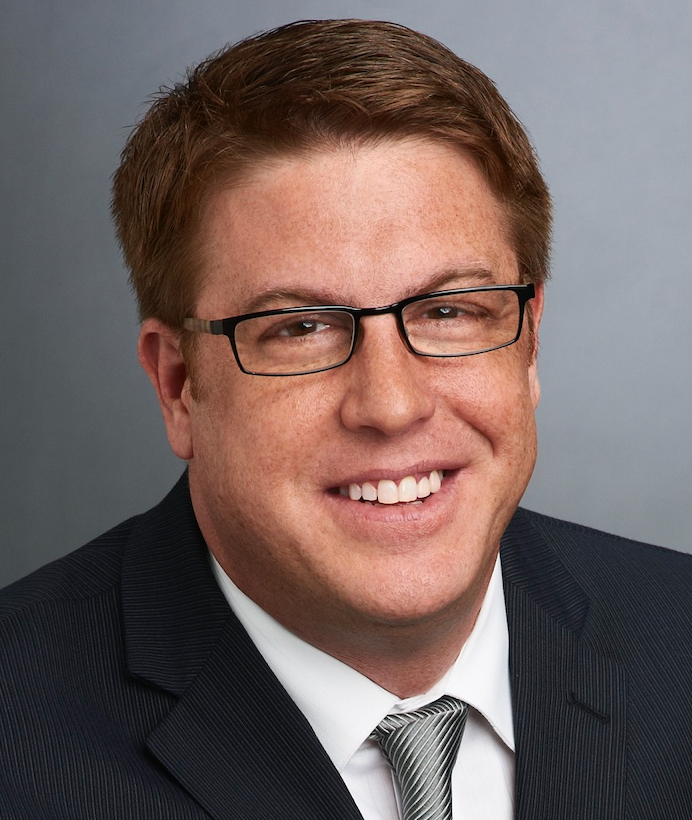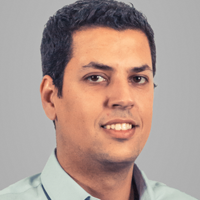
TVN Tech | TV Broadcasters Expand Cloud Usage

Broadcasters looking to replace aging HD-SDI hardware with more flexible and scalable technology are increasingly looking to the cloud, first in playout and disaster recovery (DR) but also with an eye to future production and storage applications. The challenges posed by the COVID-19 pandemic have only accelerated that trend by placing new importance on the ability to run broadcast workflows remotely.
However, cloud experts say that efficiently moving operations from traditional on-premise hardware to the cloud requires a change in workflows, and that many broadcasters will be best served by a hybrid model of cloud and on-premise hardware, including new ST 2110-compliant IP routing gear.
That was the takeaway from top broadcast technology executives and vendors speaking last week on the TVNewsCheck webinar “IP and Cloud Playout in 2021,” which examined the latest trends in master control and was moderated by this reporter. (Watch the webinar here.)
A good example of a broadcaster embracing the hybrid model is WarnerMedia, which has invested heavily in 2110 routing hardware at several locations, including the Hudson Yards facility in New York and the Techwood campus and CNN Center in Atlanta, along with ongoing work at CNN bureaus in London and Washington. But WarnerMedia has also made a big move to the cloud, shifting the backup (Business Continuity Plan) channels for the 30 HBO and Cinemax networks to the Amazon Web Services (AWS) cloud when it moved playout of those channels from Hauppauge, N.Y., to Atlanta.

Matt Azzarto
Those BCP channels in the cloud — redundant streams WarnerMedia can instantly switch to in case of failure in the primary air chain—are controlled by Evertz software, as is the IP hardware in new master control in Techwood, said Matt Azzarto, director of media technology, production engineering group for WarnerMedia.
“The IP infrastructure in our next-gen master control in Atlanta has really enabled us to build a hybrid model, if you will, where we can have automation nodes that communicate both with our on-prem and our cloud systems in a seamless fashion,” Azzarto said. “It’s a significant investment, but it’s also provided us with some flexibility for the business and allowed us to go back to our large number of brands that we now support under the WarnerMedia umbrella, including HBO, Cinemax, Turner Networks, Warner Bros. Enterprises, and give them some options as to how they’d like to move forward.”
With CNN Center now for sale, WarnerMedia is looking to consolidate all of its Atlanta operations at Techwood, including creating a new common IP infrastructure for sports and news production that will replacing aging HD-SDI control room gear currently used in both facilities. Where before CNN Center used to serve as a backup for Techwood, now WarnerMedia wants to use the cloud as a disaster recovery system instead of building a second physical site.
Using the cloud as a disaster-recovery solution was a strong trend in 2020 for Indian software firm Amagi, which specializes in running broadcast workflows in the cloud and counts NBCUniversal, Fox and Tegna as major customers. Amagi plays out 400 channels from the cloud today, with the vast majority of it on the AWS public cloud.

Srinivasan KA
“Everyone was scrambling to figure out if I cannot get in the building, how do I get access, and can I do remote production, can do I do remote master control and origination,” said Amagi co-founder Srinivasan KA. “Obviously, cloud was a great solution there because you do not need to replicate your current on-prem [hardware]. On the cloud you could actually spin them out just when the disaster hits. You can have just the automation running, and the playout instance can be dynamically spun up when the disaster hits. You’re not investing double the money for your BCP/disaster recovery solution.”
Amagi has also seen a lot of interest from programmers in using the cloud to launch OTT channels as a way to monetize their content libraries, he said, as well as a new platform for live production.
Longtime broadcast vendor Grass Valley plays both sides of the hybrid cloud/IP model, making 2110-compliant routing products as well as software designed to work in both public and private cloud environments. Its Agile Media Processing Platform (AMPP) is the software foundation of multiple cloud applications ranging from playout to distributed remote production, which the company calls the GV Media Universe.
“We’re seeing a lot of demand for the benefits of the cloud architecture, the flexibility and the scalability,” said Karl Mehring, senior director of product management for playout at Grass Valley. “Also being cloud-native, it means that the user interface is provided over secure web interfaces, so you can remote in.

Karl Mehring
“During these COVID times, people can’t get into the buildings and they need to operate their systems as they did before,” he adds. “We have some customers who are operating from their own homes and they’re operating playout like they would have done in the facility.”
Grass Valley has also seen increased interest in using the cloud for remote production for similar reasons, because of lack of access to facilities. But he said that IP conversions have also picked up pace during the pandemic.
“Some people have taken the time to do their IP migrations through this period as well,” Mehring said.
Sinclair Broadcast Group has been investing in 2110 infrastructure at Tennis Channel and its regional sports networks to support 4K production. But it is looking to use the cloud as much as possible for operations across its local broadcast stations. Last fall, it launched playout for its TBD, Comet and Charge diginets from the AWS cloud under the control of Imagine software.
Sinclair is now looking to use the cloud in storage and content management applications, said Walid Hamri, senior director of media systems at Sinclair Broadcast Group, while production applications are probably much farther off due to challenges with latency. In transitioning playout of the three diginets to the cloud, Sinclair changed the overall workflow to make it more streamlined, and that is the mandate for any other operations that it moves.

Walid Hamri
“The goal is not only to take what we have and what we’re doing today and just move it,” Hamri said. “That may not give the right results. We’re trying to rethink how we can do it differently, and by this design thinking, we’re thinking some areas could be in the cloud faster than others. The latency and responsiveness for our operations is a big concern in moving to public cloud, for now.”
Azzarto is exploring how much the cloud can be used “upstream” from playout in production, particularly for WarnerMedia’s live news and sports programming. He said latency remains a challenge for production control room environments.
“The reliability, predictability and repeatability of your operation and the tools that you use for that operation are key,” Azzarto said. “We’re looking at the responsiveness of cloud systems — can you make it feel like that button push is right there like you would on a switcher? And looking at things like the latency of transitioning between different remote sources, and how those play in.”
Mehring said that low-latency monitoring is key to effectively using the cloud in live production, and that Grass Valley has developed some new technology within AMPP for retiming incoming feeds. He notes that AWS’ new Cloud Digital Interface (CDI) technology, which supports uncompressed operation in the cloud, is also helpful, particularly in providing interoperabilty between systems.
KA said that protocols like WebRTC can greatly reduce an operator’s perception of latency in the cloud. He agreed that CDI was also an important technology, particularly for insuring video quality, but doesn’t think that uncompressed operation in the cloud is what broadcasters or the cloud platforms they use really want in the long term. Instead, he thinks low-latency, high-quality JPEG-XS compression may present a viable compromise.
“We’re starting see a lot more broadcasters going toward JPEG-XS as potentially the solution that can provide the right balance between latency and quality in being able to operate on the cloud,” KA said. “That’s something we’re doing a lot of work on, and we see that happening in 2021 in a big way, in terms of 2110 and JPEG-XS.”
Hamri and the other panelists said the decision to use private versus public cloud mainly came down to total cost of ownership. But the consensus seemed to be that public cloud was the way to go if one needed maximum flexibility in applications, like operating OTT channels that could have dynamic workloads based on demand and viewership.
For example, Amagi dynamically inserts ads on OTT streams that could have anywhere from a single viewer to a few million watching concurrently, KA said. That kind of rapid scaling up and down doesn’t make sense to do in private cloud.
“You want to do it on a private cloud, that’s going to be a nightmare,” KA said. “You’re going to have massive investments made in a private cloud that’s going to sit idle most of the time, 90% of the time, and then be used 10% of the time.”
KA said some workflows could be served well by a hybrid architecture, with some functions being run on-prem and some in the public cloud. Some Amagi customers run automation on the cloud, where there’s a lot more dynamism in terms of microservices like graphics processing, but they keep their 24/7 playout operation running from on-prem hardware with Amagi’s cloud automation software controlling it.
Mehring also sees value in such hybrid solutions controlled by cloud-native software.
“You can have a central orchestration, automation layer but then have playout nodes located in different facilities, in different private data centers, or in the cloud as well,” he said. “At the end of the day, it’s about choice. You have the choice to do nearly everything in the cloud now, but you don’t have to do it all, it’s just where it makes sense for individual operations.”

































Comments (0)